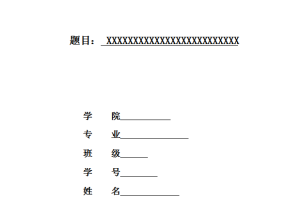广州城中村改造现状和发展研究
城中村问题是一个困扰许多城市管理站的棘手问题,如何在工业化、城市化已经成为时代主流这一宏大的社会变迁中,对城中村进行彻底的城市化,是许多城市管理者及专家学者积极探索的一个热点问题。城中村作为一种全国性的普遍现象,有许多共同的特点,但广州市的城中村作为南方开放前沿的先行者,有其独特的地方。为解决城中村问题,自2002年以来,广州市出台了一系列重要文件。本文主要针对广州城中村的改造现状,探讨城中村的形成原因、存在的问题、改造的困境和难点,最后针对这些问题、难点提出一些建议和对策。
关键词:城中村;改造现状;发展研究
Guangzhou villages transform the status quo and
development studies
The villages in question is a thorny problem that plagued many cities, the management station, and how industrialization, urbanization has become the mainstream of the times of this great social change, thorough urbanization on villages, many city managers, experts and scholars to activelyexploration is a hot issue. Villages as a national universal phenomenon, there are many common features, but the villages in the city of Guangzhou City as a forerunner of the open frontier of the South, has its own unique place. To solve the villages, since 2002, Guangzhou City, issued a series of important documents. In this paper, for the villages of transformation of the status quo, explore the reasons for the formation of villages, the problems, the plight and difficulties of the transformation, and finally solve these problems, and difficult to put forward some suggestions and countermeasures.
Key words: villages; individual housing loans; risk management
摘要…………………………………………………………………………………………………………………………… I
ABSTRACT……………………………………………………………………………………………………………… II
1 绪论…………………………………………………………………………………………………………………….. 1
1.1 课题研究的目的、意义…………………………………………………………………………………….. 1
1.2 国内外研究现状及文献综述……………………………………………………………………………… 1
2 广州城中村的形成和发展…………………………………………………………………………………….. 4
2.1 广州城中村的形成原因…………………………………………………………………………………….. 4
2.2 广州城中村的发展现状…………………………………………………………………………………….. 4
3 广州城中村改造中存在的问题分析………………………………………………………………………. 7
3.1广州城中村目前改造的状况………………………………………………………………………………. 7
3.2 广州城中村改造中存在的问题………………………………………………………………………….. 7
4 广州城中村改造的对策及建议研究…………………………………………………………………… 10
4.1 实施城中村改造建设应注重的问题和原则………………………………………………………. 10
4.2 对策建议………………………………………………………………………………………………………… 12
5结论……………………………………………………………………………………………………………………… 13
参考文献…………………………………………………………………………………………………………………. 14





